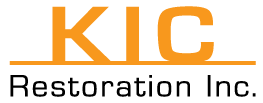Fire Restoration FAQs
 Q: Do I need to move out of my property during this process?
Q: Do I need to move out of my property during this process?
A: The short answer is, it depends. We ask you to consider the degree in which your living or work area will be subject to the odors, utilities interruptions and the noises associated with reconstruction.
Q: How is smoke odor addressed and restored?
A: This is done by employing a combination of specialized products in conjunction with specialized equipment. Regardless of the scope, it takes some serious effort to get rid of odor and complete smoke damage repairs. If the work is not completed correctly, you will likely find that odors can persist for months, even if everything is seemingly replaced. Smoke damage can give life to extremely pervasive odors, and we know how to address and restore nearly all salvageable materials including: smoke damaged ceilings, smoke damaged walls, smoke damaged clothing, smoke damaged furniture, smoke damaged blinds, etc.
Q: How am I going to pay for all this?
A: Traditionally, the property owner is responsible for payment and is required to sign our work authorization form. If this is an insurance claim, we typically collect only the deductible from the property owner and our staff then forwards the balance off to the insurance provider for payment in full, thus relinquishing you of the need to facilitate the insurance settlement process. If this is a large-scale restoration campaign, your mortgage company may be included as a payee on the payment from your insurance company and you may need to obtain authorization from them as well.
Q: Can I clean it myself?
A: We advise our clients not to engage in any DIY cleaning jobs. This will likely make the situation worse, especially if you are dealing with porous services. Even touching surfaces covered in soot can permanently rub the soot into the surface because soot is made up of minute elements of carbon that can not wait to dig in and find an eternal resting place inside your counter top. Using consumer grade cleaning products can also create a problem. The fact is, there is potential for complex chemical reactions to take place and that is why there is specially designed fire restoration products that are created to take advantage of these potential reactions. We can assure you that the quickest way to get your property back to its initial condition is to call in a professional and hang up your Windex bottle.
Q: Who ultimately authorizes an emergency response team?
A: Property owners retain the right to engage emergency response services teams immediately. Provided the losses are covered, most insurance companies will reimburse for these items. We have elected to employ a standardized pricing methodology approved by most insurance carriers, these prices are set by a third party and are administered through a software portal called Xactimate. Whether it is fire restoration for the benefit of a residential home, apartment complex or commercial high-rise, we remain well equipped to help set the ball in motion for getting everything back in its right place.
Q: How is a fire damage estimate completed relative to an insurance claim?
A: Typically items that can cause further damage to the structure are taken care of with a service authorization and down payment. This fire damage service may include emergency drying, protection of metals and mirrors and glass, board up, air filtration and demolition. Then, as a contractor, we can offer an estimate for repairs for reconstruction to the insurance company. Sometimes they will send an adjuster, other times they will use our estimate and documented photos to allow proceeding with construction to occur. Most insurance adjusters will appreciate a detailed sketch of the affected areas, detailed time and material cost, photos, all organized in a Xactimate inspired arrangement.
Q: When should the remediation begin?
A: ASAP. Most insurance companies will authorize immediate restoration activities; provided the unit costs fall within the acceptable range for the various restoration activities. It is our job to worry about that, and we never have a problem here because employ the industry standard software platform, Xactimate, so unit costs are set by a third party, thus ensuring a fair cost to the consumer or the insurance company.
Q: Will I have to repaint?
A: That depends on the level of contamination and to the degree the wall will need to be reconstructed. The high heat associated with a structure fire has a tendency to drive odor particles into various building materials like painted walls. In most cases, repainting is necessary, so we typically opt to repaint as it is the walls and ceilings that are impacted by the fire. Moreover, in our experience, the cleaning process can be extremely aggressive and therefore destabilizes the existing paint, which also can create a need to repaint.
Q: When does the reconstruction start?
A: Reconstruction does not begin until remediation is complete. Traditionally, insurance companies prefer that a field adjuster or third party adjuster actually draft an estimate prior to authorizing construction. That said, we find that insurance companies are often looking to us to furnish an estimate and this is a service we are happy to provide in most cases. If the property owner remains keen on moving things along, they can simply write a check themselves and wait to be reimbursed by the insurance company, however, we do not traditionally advise to go this route for obvious reasons.
Q: How does water damage relate to the fire restoration campaign?
A: Since we are a fully integrated fire and water damage restoration contractor this mitigates some complexity and increases the accountability for the property owner. We built our business around efficiency and we focus on ways to deliver increased value. We can quickly identify what needs to be demolished, what can be dried in place, and what needs to be replaced. Fire and flood damage can be very draining on the property owner, and we seek to streamline the entire process.
Q: What is the difference between choosing a flood and fire restoration company as opposed to a traditional general contractor?
A: The difference is considerable. Your average general knows next to nothing about how to collaborate with insurance adjusters in a way that is compliant and familiar. They simply do not know how to evaluate the cost structures associated with emergency response and the initial restoration activities. This opens the property owner up to various liabilities and fails to ensure the property owner remains poised to receive the best level of professional support at the outset. Moreover, it is unlikely they are adequately certified or experienced in the effectively remove soot, smoke, odor, and various residues. Despite the fact that they may be supremely experienced and proficient in coordinating large-scale construction projects, it is fair to say they have wildly less experience with mold remediation, moisture testing, HVAC cleaning, etc. When you choose a restoration company that will be required to collaborate with the insurance companies, be sure to elect for a company that has specific experience with submitting insurance claims or else this can be the easiest way to turn your restoration campaign into a nightmare.
